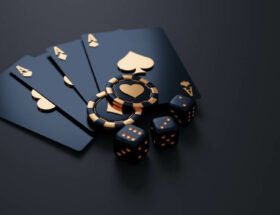When it rains too little to lubricate the windshield wipers, or when your husband drops filthy clothing on the floor, or any number of other things that annoy us. Like a doctor asserting that you only use 10% of your brain, one of my claims is that people claiming to be experts in a certain profession often say things that are just not true. Unless you’ve had a brain injury, you’re using every part of your brain. In passing, I should mention that this myth about the brain was included in the British Medical Journal’s compilation of the Top 7 Medical Myths Even Doctors Believe, which was based on a survey of more than a thousand doctors. (The Bonus Facts section is below this one for the other six things.)
To get to the meat of the matter, I went to a rock climbing class not long ago and our instructor advised us to work on our finger strength. Being somewhat anatomically literate, I wanted to inform him that was impossible, but I refrained from doing so out of fear of coming off as Melvin. I had to go ahead and spill the beans to my teacher after class; specifically, I informed him that, contrary to what he said, fingers do not possess muscles. (Officially, the tiny arrector pili muscles in your fingers are responsible for making your finger hairs stand out straight; in reality, they aren’t involved in finger movement at all; rather, they are connected to hair follicles.)
If our fingers can’t be moved by muscles, then how can those action movie actors manage to one-hand a villain who is dangling from a roof? In a nutshell: ligaments and tendons.
Long Answer: The Phalanges Are the Three Bones That Make Up a Finger
Their names come from their relative positions to the palm of your hand. Each finger has three phalanges: the closest to the palm, the middle phalange, and the distal phalange. The metacarpophalangeal joint refers to the first knuckle. (Just say it after three beers and see how many people laugh!) There are two types of interphalangeal joints: the proximal (the second knuckle) and the distal (the last knuckle).
Tendons attach muscles to bones, while ligaments hold bones together in the human body. No finger muscles are involved in the control of the tendons that govern the bones in our handy little projections; instead, they are linked to seventeen muscles in the palm and eighteen in the forearm. The flexor muscles are responsible for bringing your hand closed, whereas the extensor muscles are responsible for opening it. You can control each finger with some of these little ones.
The intrinsic muscles are located in the palm of your hand and the extrinsic muscles are in the forearm. The flexor digitorum profundus and the flexor digitorum superficialis are the two primary extrinsic flexors. The extensor digitorum, indices, and digit minimi are the three primary extrinsic extensors. Four distinct groups of muscles make up the palm of your hand: the interossei, the thenar, the hypothenar, and the lumbricals.
Even while you might not be able to identify the specific muscles that move your fingers, you can indulge your inner Melvin by knowing that they aren’t located there. Unless you have very weak fingers, the enormous size of the muscles in your fingers would likely render their range of motion negligible, therefore this is probably for the best.
Finger Facts
- For all you geometry nerds out there, here’s some info about the biomechanics of our fingers: to do any given activity, the muscles that assist control them must provide four times the pressure needed at the fingertips. Your finger muscles are powerful.
- Penis size is correlated with finger length, according to a 2011 study in the Asian Journal of Andrology. This is not related to your hand size at all; rather, it is the proportion of your index finger to the ring finger. A man’s penis was discovered to be longer in proportion to the length of his index finger relative to his ring finger. *the ratio of a man’s ring and index fingers is immediately checked by every man who reads this.* It is believed that prenatal exposure to the hormone androgen is the cause of this. This is believed to be the case because the ratio of a person’s second to fourth digits can be used as a predictor of several features influenced by androgen levels. These traits include physical aggression, left-handedness, attention deficit hyperactivity disorder (ADHD), and how attractive someone is ranked. An association between this ratio and alcoholism was even discovered in one study.
- Between the ages of 20 and 75, men typically have a right-hand grip strength of 104.3 pounds and a left-hand grip strength of 93.1 pounds. The average weight of women was 62.8 pounds, while men weighed 53.9 pounds. Between the ages of 25 and 39, grip strength peaks for both sexes. Fingers are involved in 1 in 6 occupational injuries that lead to impairment. Finger hitting is the most typical cause. Hammers, please! Well, not with your fingertips.
- Many people disagree on why your skin wrinkles more easily when it’s damp. The only thing we know for sure is that nerves and the water-induced constriction of blood vessels govern the phenomena. A section of your finger will never crease again when moist if you cut the nerve to that area. One possible explanation is that our ancestors evolved a greater grip on damp surroundings, which allowed them to more easily gather food from water and other damp places. Having wrinkled fingertips makes handling wet objects easier than smooth ones, according to multiple studies.
Finger Statistics
- One interesting statistic lies in the variability of grip strength across different age groups and genders. Grip strength peaks between the ages of 25 and 39 for both men and women, showcasing an age-related pattern in hand strength. The average right-hand grip strength for men stands at approximately 104.3 pounds, while the left-hand averages around 93.1 pounds. In comparison, women generally exhibit lower grip strength, averaging about 62.8 pounds for their right hand and 53.9 pounds for the left.
- Statistics reveal that fingers play a significant role in occupational injuries leading to impairment. Approximately 1 in 6 occupational injuries causing impairment specifically involve fingers. These injuries commonly result from finger hitting and might involve tools like hammers. This highlights the vulnerability of fingers in various occupational settings and the prevalence of finger-related injuries.
- Apart from occupational injuries, fingers face risks in everyday situations. Statistical data indicates that finger injuries contribute to a notable percentage of overall injuries. The specifics of these injuries vary but might involve accidents at home, workplace mishaps, or recreational activities. These incidents accentuate the importance of finger safety and awareness to prevent injuries.
- Studies have identified intriguing correlations between finger length and certain physical attributes or traits. For instance, research published in the Asian Journal of Andrology suggests a correlation between finger length and penis size in men. Specifically, the proportion between the length of the index finger and the ring finger can relate to the size of a man’s genitalia, independent of hand size. This correlation is associated with prenatal exposure to certain hormones.
- Statistics suggest an interesting phenomenon related to wet skin and its tendency to wrinkle. When exposed to moisture, such as during prolonged contact with water, skin on fingers and palms tends to wrinkle. This wrinkling phenomenon could be evolutionary, aiding in enhancing grip in wet conditions. Studies suggest that the wrinkled skin on fingers facilitates better handling of wet objects compared to smooth skin, emphasizing its functional adaptation.
Contrary to popular belief, the absence of intrinsic muscles within fingers doesn’t hinder their dexterity; rather, it’s the orchestrated movements of external muscles and the interconnected tendons that dictate finger mobility.







